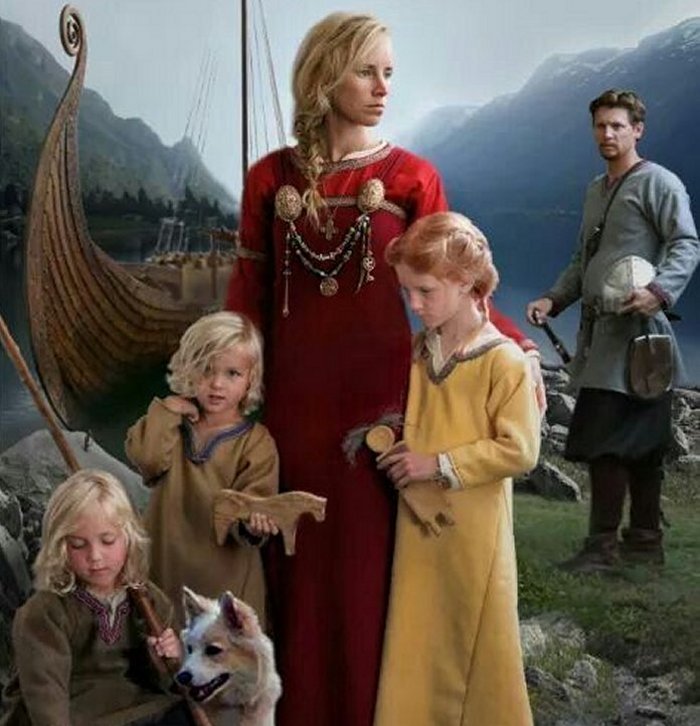Mother, Father, Child, Marriage And Divorce In Viking Society
A. Sutherland - AncientPages.com - The Vikings lived in large families that included parents, children, and grandparents. When the eldest son took over the estate, he became head of his family and from now on he had responsibility for the welfare of all.
He must provide the family with food and his wife, who was in charge of the house had to make butter and cheese, dry and smoke fish, and prepare food storage that would be enough for everyone during the long dark winter.
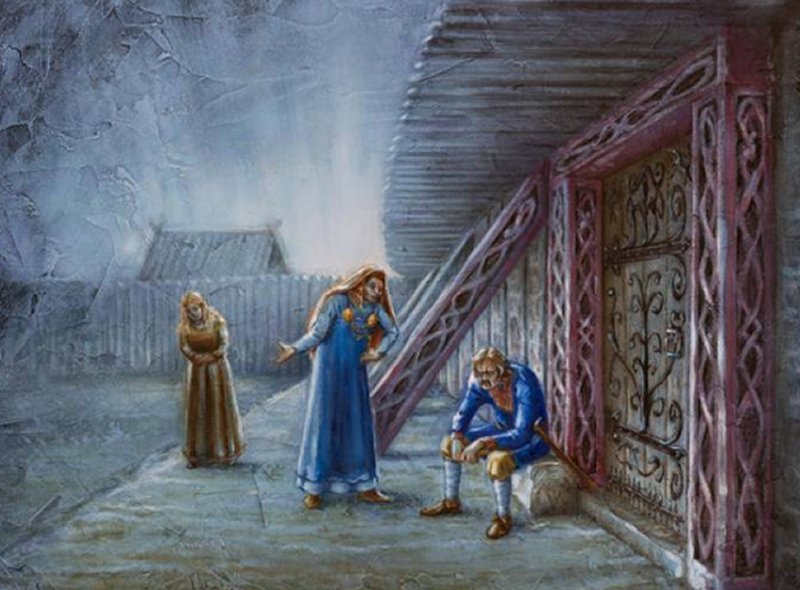 Viking life. Image credit: Mats Vänehem
Viking life. Image credit: Mats Vänehem
Additionally, she was also expected to have knowledge of herbs to prepare medicine for the sick and wounded.
Also, the responsibility for pets and farm animals rested on her and when the man went on trade trips, hunted, or walked in the Viking (meant to disappear away for a long period), it was his wife who was responsible for almost everything at home and managed the whole farm. The women were praised for their extraordinary home-running skills and artistic abilities. They were the ones who took care of all the farm and possessions.
In wealthy families, a woman had servants to help her, so it was much easier.
Time To Get Married
There is not much knowledge about the Viking wedding ritual itself, but certain indications from myths and traditions that followed from the Viking Age shed some light on the subject. Usually, the wedding was a party with relatives and friends that lasted for several days.
Viking boys and girls got married very early. Girls were usually married when they were between 12 and 15 years old and were then expected to manage a household, which certainly wasn’t always very easy. Hopefully, they could get some help from the adult women in the family.
After all, these Viking girls were still children, but they learned from their mothers and grandmothers how to keep run the household properly, to cook, clean, prepare meals, make yarn and weave and sew. Girls were also taught farm work and tending animals as it was their duty to run a farm when the men were away.
The marriage, which was planned by the relatives, was seen as a covenant for happening assistance and protection. The law did not require the consent of the woman at marriage and the girl herself had not much to say in the matter.
However, according to ancient oral tradition, it was common for fathers to discuss the subject with their daughters.
The Woman’s Dowry Was Her Personal Property
The bride brought cloth of linen and wool, a loom, and a bed as part of her dowry. The women from richer families were also able to bring with them jewelry made of silver and gold, pets, and even farms as part of the dowry.
Everything she brought into the marriage continued to be her personal property and was later passed on as a mother’s inheritance to her child.
Divorce Was Sometimes Necessary
According to Viking tradition, a woman continued throughout her life to be part of her own family and thus never completely became part of her husband's family.
If a husband treated his woman or the children badly, was too lazy to be able to provide for them, or offended her family, she could divorce him. Women could ask for a divorce at the ‘Thing’ (tinget), although this did not happen very often. However, Viking women had always had the right to divorce if they wanted to.
To carry out the divorce, the woman just needed to summon a few people who could be witnesses. At first, they gathered at the front door of the house, then, at the couple's bed, and then, she declared herself divorced from her husband. If a woman left her husband without a valid reason, the husband was allowed to keep her property.
Children Were Protected By The Law
Toddlers and young children automatically stayed with the mother in the event of a divorce. Older children, on the other hand, were usually divided between parents according to the wealth and status of each Viking family.
In the Viking family, children were protected by the law, which gave them the right to obtain their inheritance even after a divorce of their parents.
Not All Vikings Were Wealthy
In the smaller farms, the division between the work of women and men was not so clearly seen. Such a married couple had no servants, and therefore, all members of the family must do their best for the survival of their family, in the cold climate of Nordic countries.
Written by – A. Sutherland - AncientPages.com Senior Staff Writer
Copyright © AncientPages.com All rights reserved. This material may not be published, broadcast, rewritten or redistributed in whole or part without the express written permission of AncientPages.com
More From Ancient Pages
-
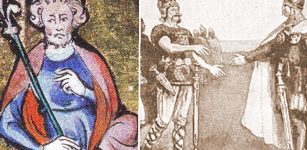 Battle Of Assandun: The Great Battle In English History And A Brief Period Of Viking Dominion In England
Featured Stories | Apr 11, 2016
Battle Of Assandun: The Great Battle In English History And A Brief Period Of Viking Dominion In England
Featured Stories | Apr 11, 2016 -
 Huge Ancient Sarayini Underground City Is Twice As Large As Previously Thought
Archaeology | Aug 22, 2023
Huge Ancient Sarayini Underground City Is Twice As Large As Previously Thought
Archaeology | Aug 22, 2023 -
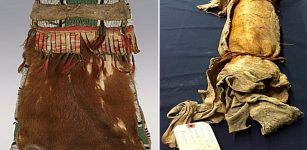 Sacred Medicine Bundle With Relics Of The First Ancestors Or Given By The Gods
Ancient Traditions And Customs | Sep 15, 2016
Sacred Medicine Bundle With Relics Of The First Ancestors Or Given By The Gods
Ancient Traditions And Customs | Sep 15, 2016 -
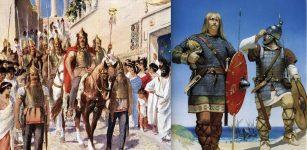 Who Were The Goths And Where Did They Come From?
Civilizations | Apr 16, 2019
Who Were The Goths And Where Did They Come From?
Civilizations | Apr 16, 2019 -
 Ancient DNA Sheds New Light On The Fall Of Major Civilizations
Archaeology | Aug 9, 2022
Ancient DNA Sheds New Light On The Fall Of Major Civilizations
Archaeology | Aug 9, 2022 -
 Should Scientists Open An 830-Million-Year-Old Rock Salt Crystal With Ancient Microorganisms That May Still Be Alive?
Archaeology | May 27, 2022
Should Scientists Open An 830-Million-Year-Old Rock Salt Crystal With Ancient Microorganisms That May Still Be Alive?
Archaeology | May 27, 2022 -
 95% Of All Modern Europeans Descended From The Seven Daughters Of Eve
Civilizations | Dec 12, 2019
95% Of All Modern Europeans Descended From The Seven Daughters Of Eve
Civilizations | Dec 12, 2019 -
 2,000-Year-Old Tumulus Of Unknown Culture Discovered In Siberia – Who Were These People?
Archaeology | Jan 4, 2023
2,000-Year-Old Tumulus Of Unknown Culture Discovered In Siberia – Who Were These People?
Archaeology | Jan 4, 2023 -
 Fire – Powerful Symbol That Played A Key Role In History Of Mankind
Ancient Symbols | May 29, 2020
Fire – Powerful Symbol That Played A Key Role In History Of Mankind
Ancient Symbols | May 29, 2020 -
 DNA Study Sheds Light On The Mysterious Picts Of Scotland
DNA | Jul 7, 2023
DNA Study Sheds Light On The Mysterious Picts Of Scotland
DNA | Jul 7, 2023 -
 Large Collection Of 2,200-Year-Old Tombs With Boat Coffins Made Of Nanmu Wood, Unearthed In SW China
Archaeology | Feb 10, 2017
Large Collection Of 2,200-Year-Old Tombs With Boat Coffins Made Of Nanmu Wood, Unearthed In SW China
Archaeology | Feb 10, 2017 -
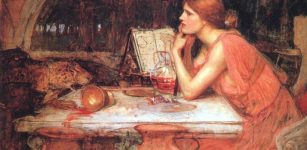 Medieval Magic – A Service Industry Used By Rich And Poor Alike
Featured Stories | Oct 29, 2019
Medieval Magic – A Service Industry Used By Rich And Poor Alike
Featured Stories | Oct 29, 2019 -
 Mysterious Underground City In Brazil Could Re-Write Ancient History – Riddle Of The 12 Men – Part 2
Featured Stories | Jan 26, 2022
Mysterious Underground City In Brazil Could Re-Write Ancient History – Riddle Of The 12 Men – Part 2
Featured Stories | Jan 26, 2022 -
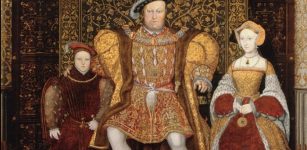 On This Day In History: Henry VIII Ascended The Throne Of England – On Apr 22, 1509
News | Apr 22, 2016
On This Day In History: Henry VIII Ascended The Throne Of England – On Apr 22, 1509
News | Apr 22, 2016 -
 Terrifying Buggane: Demonic And Tyrannical Celtic Demon That Hated Churches And Set Them On Fire
Celtic Mythology | Jul 14, 2017
Terrifying Buggane: Demonic And Tyrannical Celtic Demon That Hated Churches And Set Them On Fire
Celtic Mythology | Jul 14, 2017 -
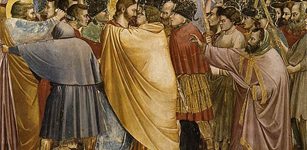 Judas: A Famous Traitor Or A Hero?
Biblical Mysteries | Oct 16, 2017
Judas: A Famous Traitor Or A Hero?
Biblical Mysteries | Oct 16, 2017 -
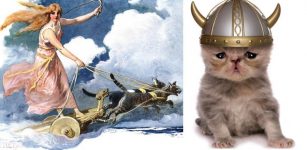 Cats Were Rare And Expensive During The Viking Age – Spectacular Discovery Reveals Why
Featured Stories | Jan 12, 2017
Cats Were Rare And Expensive During The Viking Age – Spectacular Discovery Reveals Why
Featured Stories | Jan 12, 2017 -
 Amazing Artifacts Found In Viking Double Grave In Norwegian Garden
Archaeology | Jul 10, 2023
Amazing Artifacts Found In Viking Double Grave In Norwegian Garden
Archaeology | Jul 10, 2023 -
 Stunning Spanish Stonehenge Built By The Celts Revealed By Drought
Archaeology | Aug 27, 2019
Stunning Spanish Stonehenge Built By The Celts Revealed By Drought
Archaeology | Aug 27, 2019 -
 Thousands Unknown Ancient Structures Seen From Space: Puzzling Aerial Archaeology In The Middle East
News | Feb 15, 2014
Thousands Unknown Ancient Structures Seen From Space: Puzzling Aerial Archaeology In The Middle East
News | Feb 15, 2014

